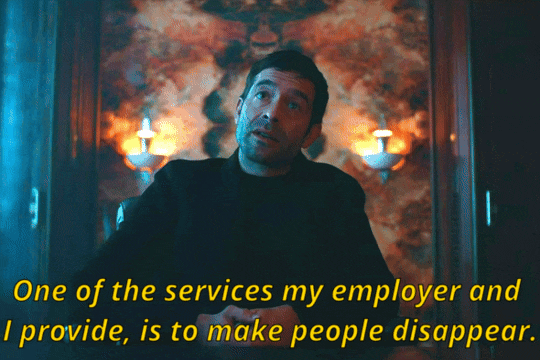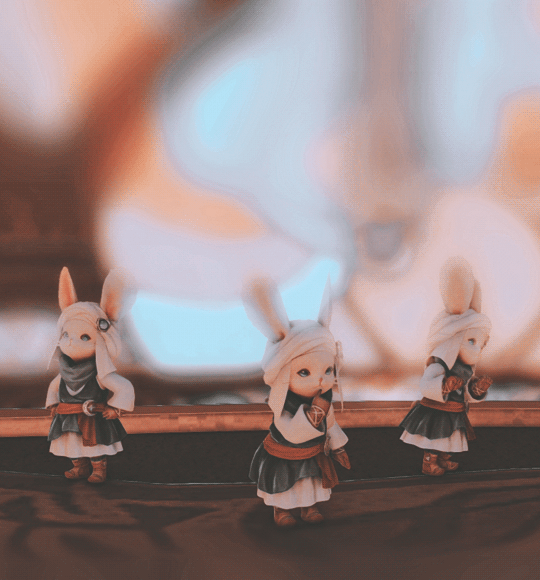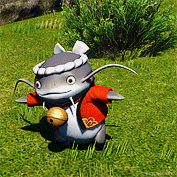Working on conlangs for FFXIV. WoL: Arslan Dotharl
Last active 2 hours ago
Don't wanna be here? Send us removal request.
Text
It's June 10th (and 4 days!)
The "something big" is a full rework of the vocabulary of most languages in my project. Most relations established between languages still apply, but the vocabulary will be reworked. Because of this, I've spent a long time logging every word in an Eorzean language I could find (I excluded Norvrandt for the time being, but that will likely be covered in the following days). Anyway, it's time to talk about the name "Sharlayan"!
Info begins here:
First reconstruction of a name - Tsarlakh, the original Amaurotine name of Thaliak. Names of the Twelve are less prone to change and usually stay within the vicinity of their original form, so this isn't a correct representation of the sound changes over time, but it does allow the form in the Sharlayan language to be Sharla, thus justifying Sharlayan as a name and does indicate a correspondence between <rl> in Amaurotine/Sharlai and <lj> in modern Eorzean languages
The shift predated Allag, since we have Iksalion, but this also means that we have the placename suffix in Amaurotine as plain -an which must have fortited in the relevant languages to -and and thus became -ard and -ald.
Much of the population of Sharlayan comes from a city-state that used to exist in what is now the Galadion Bay but was once a large beach area in the south of La Noscea (think Shadow Fault in Kholusia, which is its direct analog). This city-state, uniquely, remained largely autonomous and retained its original culture during the period of Allagan rule, and managed to sit quietly through all the Calamities until the Sixth, rebuilding on its own time whenever disaster struck. As such, there is a direct traceable link from this city-state back to Amaurot, hence the preservation of the Amaurotine language in Sharlayan.
0 notes
Text
Quite a few, to be honest. Arslan is a Dotharli warrior, who definitively got in at least a couple kills prior to leaving for Eorzea and has no issue carrying out violent solutions to problems.
#FFXIV #WOLpromptAday
April 10, 2025
How many lives has your WoL taken by choice, not by MSQ duty? Whose death were they resolved to see, no matter what? Zero, One, One hundred? Do they regret it? Was it accidental? Or do they consider it as "collateral damage" worth the result?
What “ghosts�� still haunt them? Whose face of those they’ve killed do they still see clearly? Have / will they ever be able to come to terms and or justify their actions? What might happen if someone decided to seek revenge?
( @naga-lalamaga & @grieverworship )

10 notes
·
View notes
Text
Definitely the Loporrits. I would have said Sylphs before I read too much on Endwalker, but given my character Arslan is basically trying to hold on to being Azem as much as possible, it makes sense that she would connect the most with one of the last vestiges of the old world. And especially with how critical they became during thr latter part of Endwalker.
#FFXIV #WOLpromptAday
May 26, 2025
Allied societies
Amalj'aa, Sylph, Kobold, Sahagin, Ixali
Vanu Vanu, Vath, Moogle,
Kojin, Ananta, Namazu,
Pixie, Qitari, Dwarf
Arkasodara, Omicron, Loporrit
Pelupelu, Mamool Ja
Out of every tribe that we know of thus far, who are your WOLs best allies? Are they bloodsworn with any or all of them? How did learning about each tribe change your perspective?
What made them better or worse in your WOLs opinion? Who had the better ideas for peace and who still seems a bit suspicious? What might the future bring for both the tribe and your WOL? How might this change the non-tribal culture around them?
( @grieverworship )


10 notes
·
View notes
Text
i like non-destructive image editing as much as the next guy, but what I don't like is when software doesn't even give you the OPTION to edit destructively without going through like, 30 extra steps. When I apply an adjustment, I usually just want to apply the adjustment, not go through the whole process of creating an "adjustment layer" and then merging it. I cannot think of a possible scenario where someone would ever want to paste in a PNG image as anything other than a raster layer, or where someone would want a rectangle to appear as its own "shape" layer rather than on the layer you're drawing on.
2 notes
·
View notes
Text
Thoughts on how exactly Lalafellin grammar lost the rhythmic system
These are general rules, there may be exceptions.
All nouns end up in their nominative singular and plural form (reduplication for plurals is retained, but not the rest of the system).
Mass nouns variably take the singular or plural, as they did in Classical Lalafellin.
Names become formalized into the AA format, with simply a duplicated syllable for any given name. This, of course, has led to the general decay of the pre-existing naming system, which is now often used alongside contextual descriptors where necessary (which, in some dialects, entirely replace names). These descriptors will eventually formalize into a proper system of names in the coming centuries.
Adjective-duplicating-onto-noun is lost, leaving a bunch of orphaned derivations derived from contractions of noun phrases.
A new derivation system is formed, the details of which will be worked out.
Tense and aspect are lost entirely, and are now expressed with auxiliary verbs and prepositional phrases specifying time.
Adjectives become grammatically distinct from verbs, largely forming from a set of new derivational suffixes on verbs and nouns. Thus, the copula's use case expands dramatically, as "to be [adjective]" is now no longer a verb corresponding to the adjective.
9 notes
·
View notes
Text
Progress Update
I've been caught up with other projects, but I hope to get back to this eventually! Expect more on general Eorzean once I get back to working on Bad Apple, and also plenty on Lalafellin.
1 note
·
View note
Text
Dravani, or Dragonspeak, is the modern form of the language spoken by dragons in Eorzea. Dragons are an alien race that arrived on Etheirys early in its history but following the Sundering. Due to their alien physiology, they have a different respiratory and vocal system to humans and Etheirys beastfolk. This means they have one additional place and manner of articulation compared to humans: draconic aspirates and draconic nasals. The modern Dragonspeak language contains one of each type of sound in normal words, notated <[h]> and <[n]> respectively. These two sounds are part of a regular categorization of nouns and other terms into two distinct classes; each simple content word has one of these two sounds. The classes also roughly correspond with an "animacy" distinction, with the [h] class being roughly "inanimate" and the [n] class being roughly "animate", though there is quite a degree of natural variation as there is in any semantic class system.
In human speech, [h] is usually approximated with a variety of voiceless continuants in the back of the mouth, such as /h/ or /x/. Similarly, [n] is often approximated with voiced continuants, usually nasals or fricatives, closer to to front of the mouth, like /n/, /m/, or /v/. The last interpretation is especially significant as it is how Ishgardian loans Dravani words, including, well, "Dravani", which comes through "drav" from Dravani dra[n] meaning "dragon".
Dravani vowels are /i e æ ɒ o u/, written <i y e a o u>, though the formants are generally lower-pitched than the IPA symbols would suggest (instead, the IPA symbols represent "relative vowels"). This also explains the strange orthography for the front vowels.
4 notes
·
View notes
Text
I have returned from the Lifestream! For the next few posts I am going to be focusing on a couple languages (Dravani and Old Sylphic) that have a number of canonical resources associated with them. These are different from the languages I've been working on so far, because they usually suck ass only require a few touchups for linguistic sensibility and setting consistency.
0 notes
Note
This is so cool, also very iconic of you to use bad apple to help work out the grammar and the language. Godspeed and good luck! I shall be following your endeavour
Thanks a lot! I've mainly been waiting for the visual editor to drop on Linguifex so I can get to posting info about my languages there.
1 note
·
View note
Text
Turns out I made a critical timeline error with where the Lalafell fit into the whole Mhach/Belah'dia/Ul'dah timeline, in that they actually inhabited all 3 city-states instead of arriving during the Belah'dian era like I thought. It's too late to go back and redo everything, so Lalafellin loans are still mainly in the mid-late 6th Astral Era, into Belah'dian and Ul'dahn, due to an unspecified reason.
4 notes
·
View notes
Text
Haukke?
Doing Haukke will be interesting, as I'll be basing it off this canon Sylphic language info.
3 notes
·
View notes
Text
Lalafell Naming Conventions
I'm not dead! Anyway: The Lalafell naming conventions originate as follows. 1. When an adjective modifies a noun in Lalafellin, the final segment of the adjective copies itself onto the end of the noun. So, when ta-riki modifies la-mana, it becomes ta-riki la-mana-riki. It is likely that these forms of phrases being used for names is shared with Roegadyn names, and that both formats originate from Aldenardic nickname conventions. As often happens in language, history repeats itself, and these nicknames get nicknamed:
ta-riki la-mana-riki -> Tatariki Nanariki
Diminutives are formed somewhat irregularly in Lalafellin by abbreviating segments and adding additional repetition. Each element of the name functions as a grammatically plural AB noun, and they are declined in sync with one another. Usually the last three syllables of the name are taken and formed into an A segment (1 syllable) and a B segment (2 syllables). A missing final schwa counts as a syllable. This is the form of the Dunesfolk male name. As often happens in language, history repeats itself, and these nicknames get nicknamed.
Tatariki Nanariki -> Ririki Riki The name functions as an AB noun in the plural (ri-ki), however doubled with the singular form. As such, when declined, each element follows the respective plural or singular format. This is the form of the Dunesfolk female name; the Plainsfolk female name form developed divergently into Rikiki Riki. Both segments function as an AB noun in the singular, although the first one's reduplicated latter syllable resembles the dative form (in fact it is broken up as riki-ki ri-ki.) The AAB-AB form became the primary form of names in the Lalafell homeland. Both Plainsfolk and Dunesfolk names diverge here; the Plainsfolk of Vylbrand picked up phonetic patterns from the local Lominsan language that caused their male naming pattern to diverge. As neither race primarily speaks Lalafellin, that's where the naming system stayed, with AAB-CCB (irregularized in Plainsfolk) names for males and AAB-AB or ABB-AB names for females.
Note that the female name form is still regularly used as a diminutive for male names. But guess what, back in the Lalafell homeland...
As often happens in language, history repeats itself, and these nicknames get nicknamed.
Ririki Riki -> Kiki
By the modern day, the rhythmic system has been fully lost, allowing names to simplify down to single repeated syllable. For more specific identification, a descriptor is often appended to the beginning, though this is often not necessary.
7 notes
·
View notes
Text
Linguifex Accoument
Eorzean is on Linguifex!
4 notes
·
View notes
Text
Sorry for lack of activity, I have some Christmas related projects to do
1 note
·
View note
Text
Grammar of Allaganic Languages Pt.1
Allaganic languages are predominantly SVO, although Allagan itself had free word order and was predominantly SOV (while Amaurotine had free word order and placed the topic first (usually with verb-object bonding, so often SOV but also OVS; this later evolved into the Aldenardic passive voice) An exception is Ishgardian, where VOS constructions are permitted with the preposition on. This is a loaned grammatical feature from Dravani (and in fact, so is the particle itself, though its function differs). However, SVO remains the primary word order. Additionally, the Lalafellin languages use strictly SOV.
2. Most Allaganic languages place adjectives (including numerals, negatives, and nouns in the genitive case) after the head, but place them before when forming compound words. This is reflected in the Eorzean word atari, "to do nothing", from a compound of ata + uri. In Nymian, adjectives always precede nouns. 3. Most Allaganic languages have prepositions. However, Nymian shifted, in many cases, to postpositions as its adjective order also switched.
4. The way of marking yes/no questions varies from language to language - in Mhachi and descendants, as well as Hyuran (and thus ultimately Eorzean), a particle is placed at the end of the sentence. In Elezen, it's placed after the verb (except in Padjali, where it's placed at the beginning of the sentence). In Roegadynic, you switch from SVO to VSO. In Garlean, no change is made to the sentence at all, except a change in tone. In the original Allagan, the verb is moved to the front of the sentence (the origin of Roegadynic's word order thing). 5. Auxiliaries are consistently on the other side of a verb compared to its modifiers in Allaganic languages - in most languages including Eorzean, the order is "should go quickly", but in Nymian and Koboldic it's "quickly go should".
#conlang#ffxiv#linguistics#language#final fantasy xiv#allagan#ishgard#padjali#elezen#roegadyn#lominsan#grammar#adjective#adjectives#garlean#mhach#lalafell#nym#kobold#amaurotine#language history
8 notes
·
View notes
Text
ok just to explain
since my bad apple posts seem to be falling off, bad apple is essentially the way I'm working on my languages
cuz an Eorzean word usually requires input from most of my other langauges, and it also makes me determine the grammar for Eorzean. Anyway, I'll be working on Padjali, Ishgardian, and Lominsan versions of Bad Apple as well to determine their grammar.
0 notes



